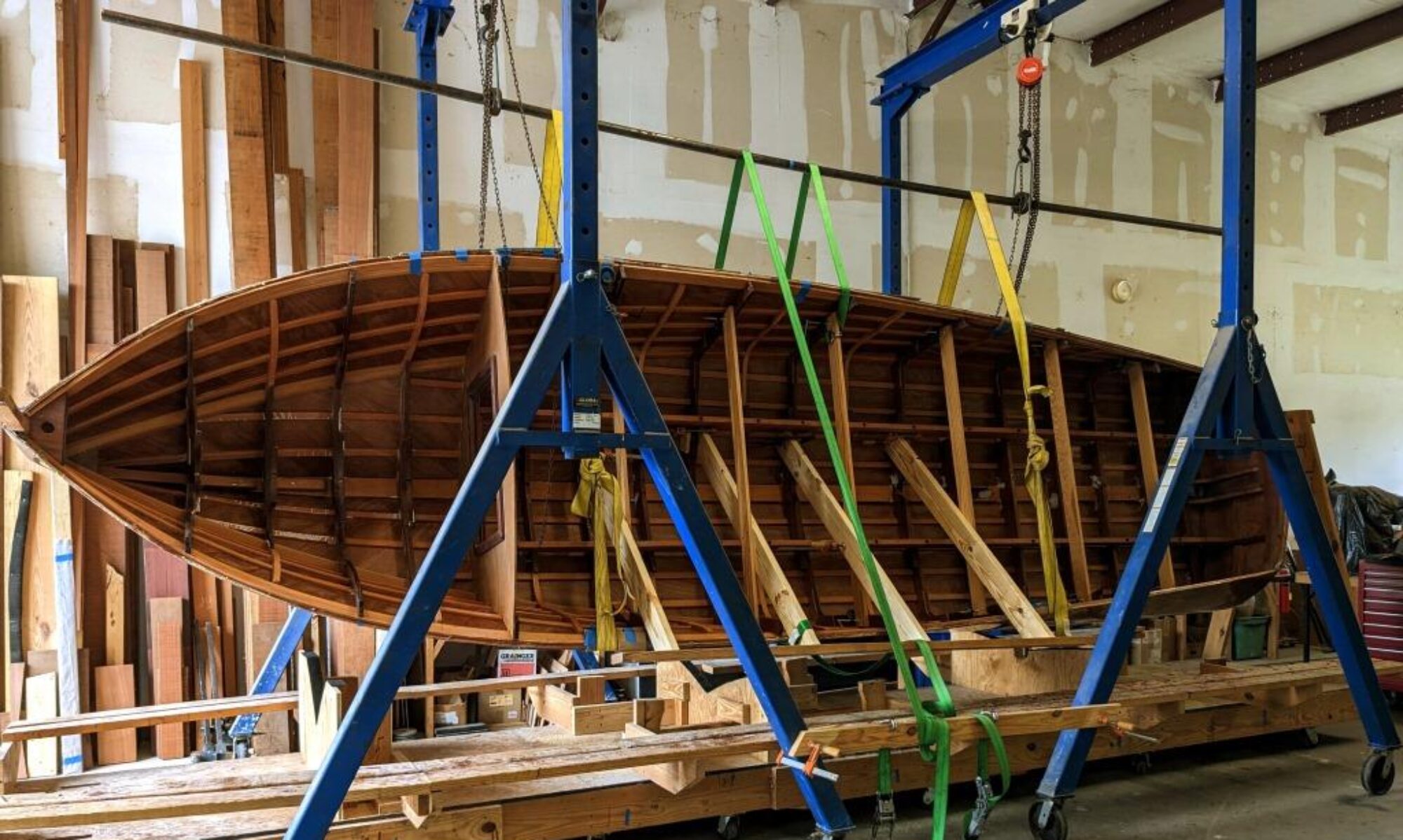
Having completed the 1st layer of planking, and being careful to edge glue each plank, we had to make sure we had an air tight surface for pulling a good vacuum. So we rolled on a coat of neat epoxy and then followed that with a scrape-fill of epoxy thickened to the consistency of mayonnaise. Continue reading “Cold Molding the Next Layer”

